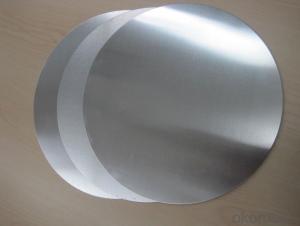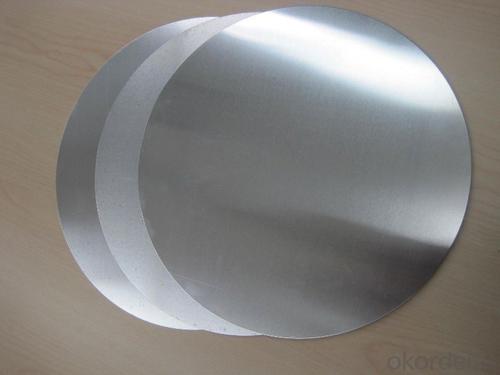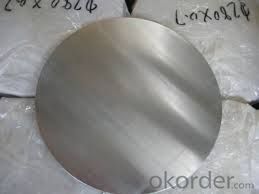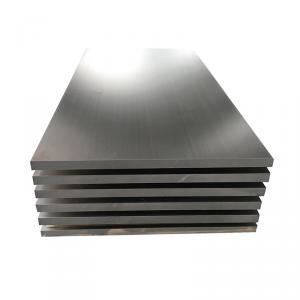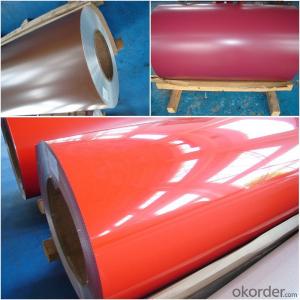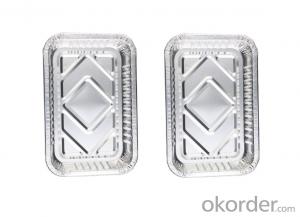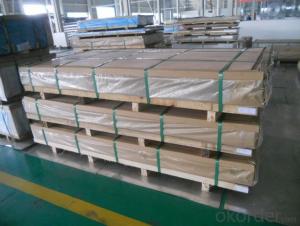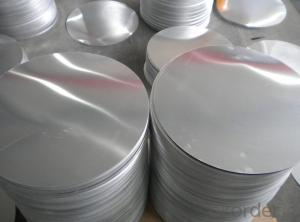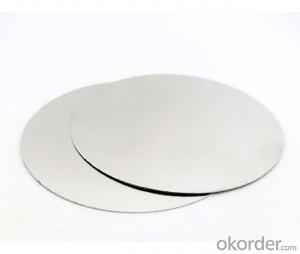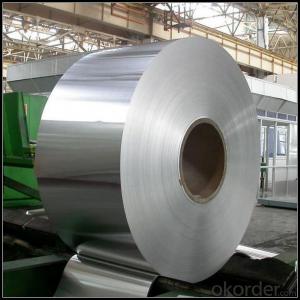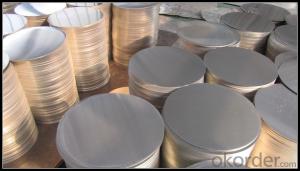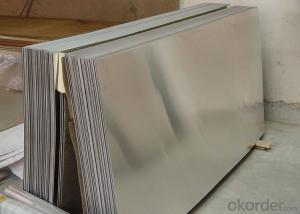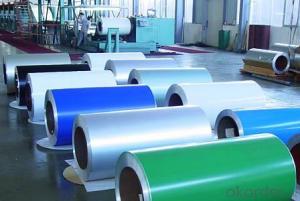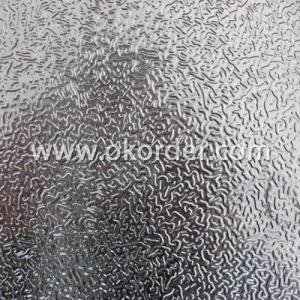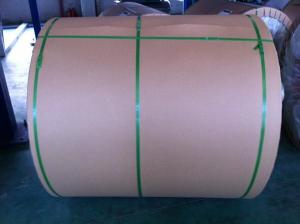Aluminum Roof Sheets Home Depot Kitchen Usage Hot Rolling 1050 Aluminum Disc
- Loading Port:
- Tianjin
- Payment Terms:
- TT OR LC
- Min Order Qty:
- 5 m.t.
- Supply Capability:
- 600 m.t./month
OKorder Service Pledge
OKorder Financial Service
You Might Also Like
Specification
Kitchen Useage Hot Rolling 1050 Aluminium Disc
Professional aluminum product manufacturer
We have our own plant , Laboratory and engineer
Over 100 models can totaly satisfy your request
As powerful and stronger factory, our aluminum quality is very stable and reliable
2 years warranty period
Specifications:
Thickness:0.5mm-6.0mm
Width:100mm-900mm
Surface:Bright & smooth surface, not defects like white rust, oil patch.
Product Information :
Product | Aluminum Circle |
Alloy | 1050 1060 1070 1100 1200 |
Temper | O, H12, H14, H18 and H24... |
Thickness | 0.5mm-6.0mm |
Diameter | 100mm-900mm |
Lead Time | Within 30-45 days after receiving deposit |
Packing | Standard Exporting wooden pallets or based on customer requirement |
Material | Using high-tech machinery utilizing premium grade Aluminium Coil. Customized according to the needs and demands of the clients these can be availed at different technical specifications. |
Surface: | Bright & smooth surface, free from defects like white rust, oil patch, edge damage. |
Application | Aluminium Circles are used in Reflective Sign Boards, Road Furniture, Utensils, Sand witch Bottom, Cooker, Non-Stick etc. |
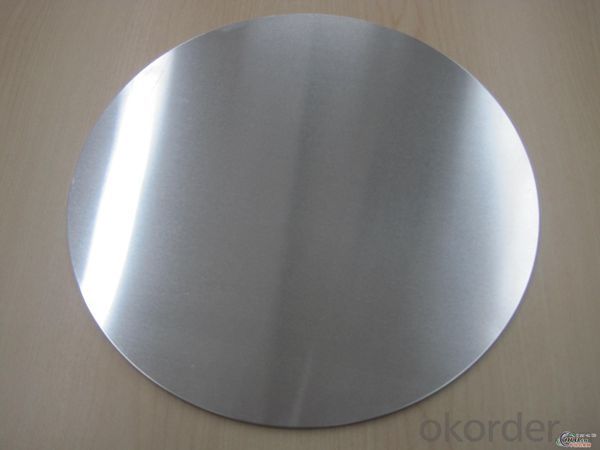
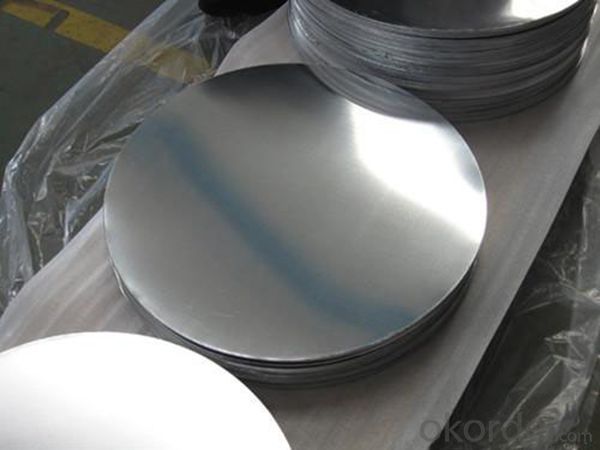
- Q: How do aluminum sheets perform in terms of heat reflectivity?
- Aluminum sheets have excellent heat reflectivity properties. They efficiently reflect heat and radiation, making them suitable for various applications that require heat insulation or management.
- Q: Can aluminum sheet be painted?
- Yes, aluminum sheet can be painted. However, it is important to properly prepare the surface before painting to ensure that the paint adheres well and lasts longer. The process usually involves cleaning the aluminum sheet to remove any dirt, grease, or oxidation, followed by applying a primer to promote better adhesion. Once the primer is dry, you can then apply the paint of your choice. It is recommended to use a high-quality paint suitable for metal surfaces to achieve the best results. Additionally, if the aluminum sheet will be exposed to outdoor elements, it is advisable to use a paint that is specifically formulated for exterior use, in order to provide protection against weathering and corrosion.
- Q: What are the different finishes available for aluminum sheets?
- There are several different finishes available for aluminum sheets, each with its own unique characteristics and benefits. Some of the most common finishes include: 1. Mill finish: This is the most basic finish for aluminum sheets, characterized by a smooth, shiny surface. It is typically achieved by passing the aluminum through a rolling mill, leaving it with a natural appearance. Mill finish is often preferred for industrial applications where aesthetics are not a primary concern. 2. Anodized finish: Anodizing is an electrochemical process that adds a layer of oxide to the surface of the aluminum sheet, providing enhanced durability and corrosion resistance. Anodized finishes can range from clear to various colors, and they can also be dyed to achieve specific hues. 3. Brushed finish: This finish is achieved by brushing the aluminum sheet with abrasive materials, creating a pattern of fine lines on the surface. Brushed finishes offer a distinctive, textured appearance and are commonly used in architectural and decorative applications. 4. Polished finish: Polishing aluminum sheets involves buffing the surface to a high shine, resulting in a mirror-like, reflective finish. This finish is often chosen for decorative purposes, such as in interior design, automotive detailing, or jewelry making. 5. Embossed finish: Embossing involves creating raised patterns or designs on the surface of the aluminum sheet, adding texture and visual interest. It can be achieved through various methods, such as roll embossing or stamping, and is commonly used for decorative purposes or to improve grip on certain applications. 6. Powder-coated finish: Powder coating is a process where a dry powder is applied to the aluminum sheet and then cured under heat, creating a tough, durable, and attractive finish. Powder-coated finishes come in a wide range of colors and provide excellent resistance to fading, chipping, and scratching. These are just a few examples of the different finishes available for aluminum sheets. The choice of finish will depend on the specific requirements of the application, such as aesthetics, durability, and functionality.
- Q: Describe the steps involved in installing aluminum sheets on a roof.
- <p>Installing aluminum sheets on a roof involves several key steps: 1) Inspect the roof structure to ensure it can support the new material. 2) Remove any existing roofing material. 3) Install roof underlayment to protect against moisture. 4) Position the first aluminum sheet at the lowest point of the roof, aligning it with the eaves. 5) Secure the sheet using clips or screws, ensuring a watertight seal. 6) Continue installing sheets up the roof, overlapping each by at least 2 inches for a secure fit. 7) Cut and fit sheets around vents, pipes, and other roof protrusions. 8) Install flashing and trim to finish edges and seal the roof. 9) Check for proper alignment and secure all fasteners. 10) Clean up debris and inspect the installation for any gaps or leaks.</p>
- Q: What are the different methods of surface embossing aluminum sheets?
- There are several different methods of surface embossing aluminum sheets, each with its own unique process and outcome. Some of the most commonly used methods include: 1. Mechanical Embossing: This method involves using mechanical tools, such as rollers or presses, to create patterns or designs on the surface of the aluminum sheet. The sheet is passed through the rollers or pressed against a patterned surface, which impresses the design onto the metal. Mechanical embossing is often used for creating repetitive patterns, such as diamond or checkerplate patterns. 2. Chemical Embossing: This technique involves using chemical etching or engraving to create patterns on the aluminum sheet. A chemical solution is applied to the surface of the metal, which selectively etches away the desired areas, leaving behind the embossed pattern. Chemical embossing allows for more intricate and detailed designs to be created on the aluminum sheet. 3. Heat Embossing: Heat embossing is a method that involves using heat to create embossed designs on the aluminum sheet. A heated die or stamp is pressed against the surface of the metal, causing it to deform and create the desired pattern. Heat embossing is commonly used for creating raised logos or text on aluminum sheets. 4. Laser Embossing: Laser embossing utilizes laser technology to create embossed designs on aluminum sheets. A laser beam is directed onto the surface of the metal, vaporizing or melting away the desired areas to create the embossed pattern. Laser embossing offers high precision and allows for the creation of intricate and complex designs. 5. Roll Embossing: Roll embossing is a method where the aluminum sheet is passed through a series of engraved rolls, which impress the desired pattern onto the metal. Each roll has a different pattern or design, allowing for a variety of embossed finishes to be achieved. Roll embossing is commonly used for creating textured or decorative finishes on aluminum sheets. Overall, the different methods of surface embossing aluminum sheets provide a range of options for creating unique and visually appealing designs. The choice of method depends on the desired outcome, complexity of the design, and the specific requirements of the project.
- Q: I broke the swing-arm of a cut-off saw, need to know how to weld it back. I have a stick welder and can weld steel, but have never messed with cast aluminum.
- If it has a silvery-grey appearance and is very light, than it is probably aluminum, especially if you did a spark test and nothing happened(ruling out magnesium, which is unlikely for a random part anyway). Aluminum is alot lighter than steel, if you are holding it you would beable to tell. Magnesium is lighter than aluminum, but will give of red spark when touched with a grinder or shavings are lit. Cast aluminum can be welded with a wire spool gun, any certified aluminum shop(and most welding shops in general) would have one. It can also be Tig welded which would take longer but may yield a better result. *** Do not preheat the aluminum that hot, never preheat it more than 150°F, at 300°F you will start to degrade the aluminum, especially if it is an alloy. Aluminum melts at 1220°F but with preheat it would be possible to exceed that(especially with a spool gun). Do not do multipass beads without allowing it to cool. You will need to clean the oxide off the surface with a stainless steel brush or acid, normal steel will leave impurities that will affect you welding.
- Q: This question asks for the method to determine the quantity of aluminum sheet required for a specific project.
- <p>To calculate the amount of aluminum sheet needed for a project, first determine the dimensions of the area to be covered. Measure the length and width to find the total area in square units. If the project involves complex shapes, break it down into simpler shapes like rectangles and circles, and calculate the area for each. Multiply the total area by the thickness of the aluminum sheet required. Finally, consider any additional material for overlaps or wastage, typically around 5-10%. The total volume calculated will give you the amount of aluminum sheet needed for the project.</p>
- Q: Can 101 aluminum sheets be bonded to other materials?
- Indeed, it is possible to bond 101 aluminum sheets with other materials. Aluminum demonstrates remarkable versatility in its capability to be bonded with a vast array of substrates through diverse bonding techniques. Several commonly employed methods for bonding aluminum sheets to other materials comprise adhesive bonding, mechanical fastening, welding, and brazing. The selection of a specific bonding technique hinges upon factors such as the composition of the material to be bonded with aluminum, the desired strength of the bond, and the intended application. Nonetheless, it is crucial to ensure compatibility between the aluminum sheets and the other materials to guarantee the establishment of a robust and long-lasting bond.
- Q: This question asks if there are distinctions among various coatings applied to aluminum sheets.
- <p>Yes, there are significant differences between different types of coatings on aluminum sheets. These differences can include the purpose of the coating, such as for corrosion resistance, decorative effects, or enhanced durability. The materials used for the coatings can also vary, with options like anodizing, powder coating, or paint. Each type of coating has unique properties, such as resistance to weather, chemicals, or UV rays, and they can affect the surface appearance, weight, and cost of the aluminum sheet. The choice of coating often depends on the specific application and environmental conditions the aluminum sheet will be subjected to.</p>
- Q: Can aluminum sheets be anodized in different finishes?
- Yes, aluminum sheets can be anodized in different finishes. Anodizing is a process that creates a protective oxide layer on the surface of aluminum, and this layer can be colored or finished in various ways to achieve different aesthetic and functional results.
Send your message to us
Aluminum Roof Sheets Home Depot Kitchen Usage Hot Rolling 1050 Aluminum Disc
- Loading Port:
- Tianjin
- Payment Terms:
- TT OR LC
- Min Order Qty:
- 5 m.t.
- Supply Capability:
- 600 m.t./month
OKorder Service Pledge
OKorder Financial Service
Similar products
Hot products
Hot Searches
Related keywords
